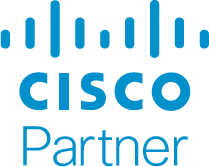January 03, 2025
7 Tips for a Successful AIOps Implementation
AIOps can help an organization greatly improve observability and help reduce alert fatigue, outages, security risks, and more, but requires careful data preparation, long-term planning, and other considerations for successful implementation.

The more an organization’s IT environment grows, so does the need to efficiently manage data, applications, networks and other intricate components of modern systems.
Many organizations are growing so fast that their IT operations teams are struggling to keep up with troubleshooting, routine monitoring, root-cause analysis and alert fatigue, let alone proactively identifying issues before they happen.
A more efficient way of keeping operations running smoothly is possible though artificial intelligence for IT operations (AIOps), the practice of using AI, automation, machine learning and most importantly, data, to improve traditional observability.
The benefits of AIOps include reduced operations cost, increased resiliency, predictive service management, improved customer experience and more.
To realize these benefits, there are some key steps organizations should follow when implementing AIOps.
7 Ways to Prepare Your Organization for AIOps
1. Develop an AIOps Strategy
One of the first steps to kick off your AIOps journey is to set objectives and goals, determine a timeline, gain top-down support from management and identify key people and processes. Creating a roadmap can help set realistic expectations about what can be achieved and gain support from key leaders.
AIOps implementation can take several weeks or months depending on the use cases and complexity. Establishing project management roles and ensuring that work is spread across multiple players vs. one person can help address knowledge retention issues.
2. Understand Tooling
Oftentimes, organizations have many tools with similar purposes. This is a good opportunity to take inventory of your tooling to identify duplication and gaps to help ensure your infrastructure is monitored correctly and able to support AIOps.
Understanding what tools you already have in place and which ones can be enabled with additional tooling can help you narrow down vendors and products later down the line. Working with a third-party to assess your tooling may be helpful for your organization.
3. Create Use Cases
Rather than taking a “big bang” approach of completely overhauling your current monitoring and observability practices, focusing on specific initiatives or approaching the work in phases is less risky.
For example, some use cases could include increasing anomaly detection, improving code, accelerating root cause analysis, establishing application performance monitoring and more. A good starting point is to look at your most critical apps and services and ensure that you have instant response capabilities available.
4. Clean Up Your Data
Bad data yields bad outcomes. Without good quality data, your machine learning models will not operate as desired. Consolidating data into a single repository, normalizing it to remove any unstructured or redundant data, standardizing it into a standard format so that it is easily understood by different systems, and labeling it for context within machine learning models is key for ensuring your data is useable. Understanding the supported data your AIOps solution supports is also critical so you get the most value from the data feed into the system.
Good quality data will help ensure that any alerts delivered by your AIOps solution are meaningful and actionable. Ensuring any sensitive data is secure is another major consideration to address before diving into AIOps.
5. Assess Your Internal Resources
Not all organizations have robust IT teams that enable a DIY approach to observability. For example, model training is a key component of successful AIOps and is typically done by machine learning engineers and data scientists. You need skilled people for that work, so if you do not have those internal resources, plan to hire additional support or look for a vendor that can handle doing that work, at least during initial deployment.
Another critical aspect of observability is the management and oversight of IT assets, which facilitates root cause analysis, identifies dependencies, and determines which team should address incidents. A cross-functional team usually manages these processes effectively.
If your organization does not have the necessary infrastructure in place, a vendor can help implement the required technology. Additionally, it’s important to involve an operations team for continuous learning, data scientists to engineer effective solutions, and DevOps engineers for coding tasks. Building a well-rounded team will significantly enhance your observability efforts and improve overall operational efficiency.
6. Choose a Vendor
Once you have a clearer picture of your tooling, use cases and internal resources, you are ready to meet with vendors and determine which solution will work for you.
An out-of-the-box solution works for most organizations and they are quicker to implement. While customized solutions seem more flexible and scalable, the time spent building the solution and maintaining it can add up and make it more expensive, especially if it is not guaranteed you will always have these internal resources available.
7. Continuously Improve
Once you have selected an AIOps solution and have your initial use cases addressed, determine which priority is next in line. Continue improving data quality, keep training your models, leverage available software and optimize processes. AIOps is an iterative process, which is why project management and having the right teams in place is essential for success.
There is a lot of work in simply preparing for AIOps. While there is minimal disruption to business when implementing an AIOPs tool, a lot of effort is spent in developing processes, refining data, and carefully evaluating your models for accuracy.
This is why many organizations find working with a trusted third-party resource, such as CDW, is valuable. Whether you need help developing an AIOps Strategy with defined use cases, cleaning up your data, building model sets, assessing your tooling, refining a CMDB, or simply ensuring you have the right processes in place, CDW can help.

Deliver exceptional digital experiences, optimize for cost and performance, and maximize digital business revenue.
Davandra Panchal
Observability Enterprise Architect
Jason Swartz
Observability Architect
